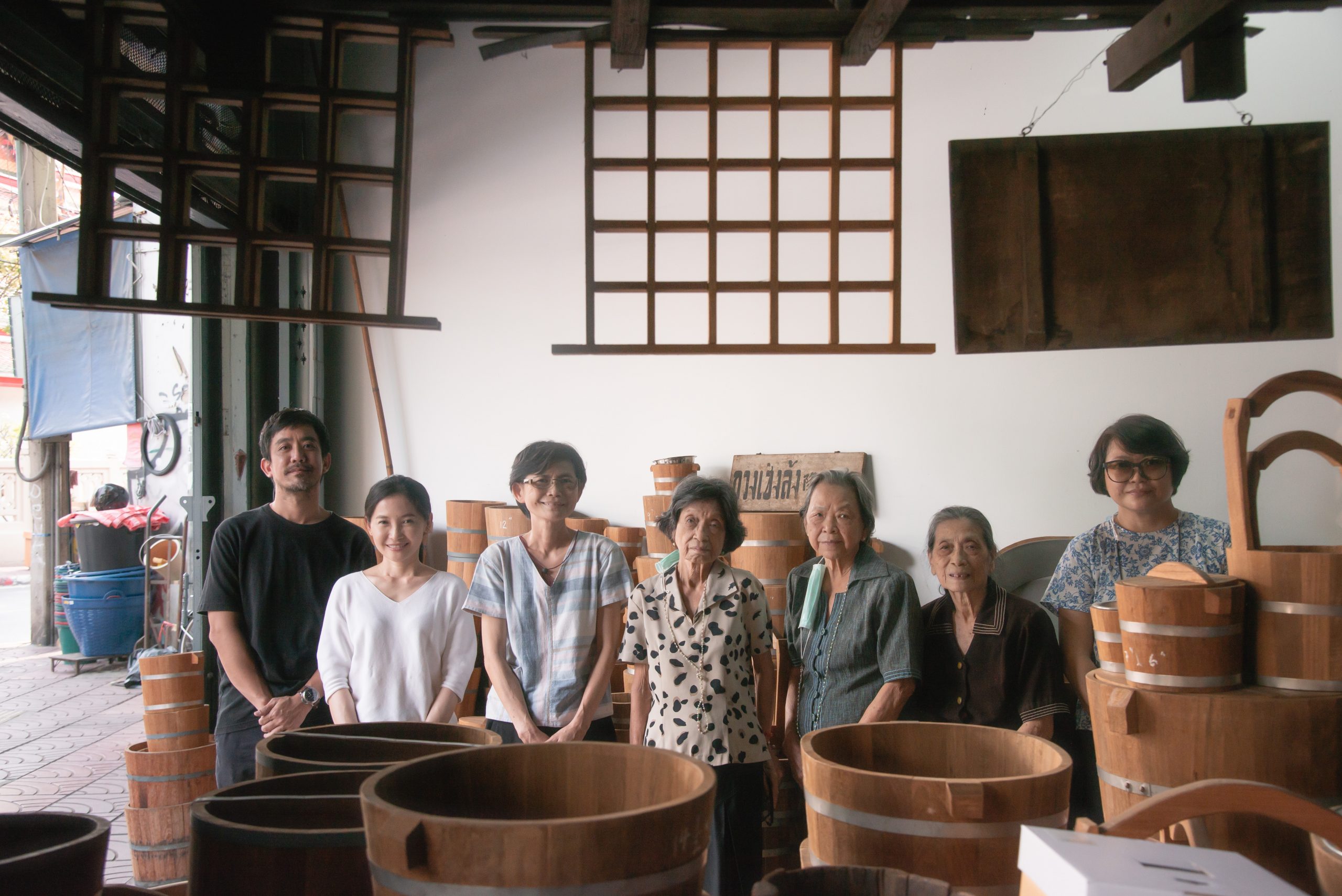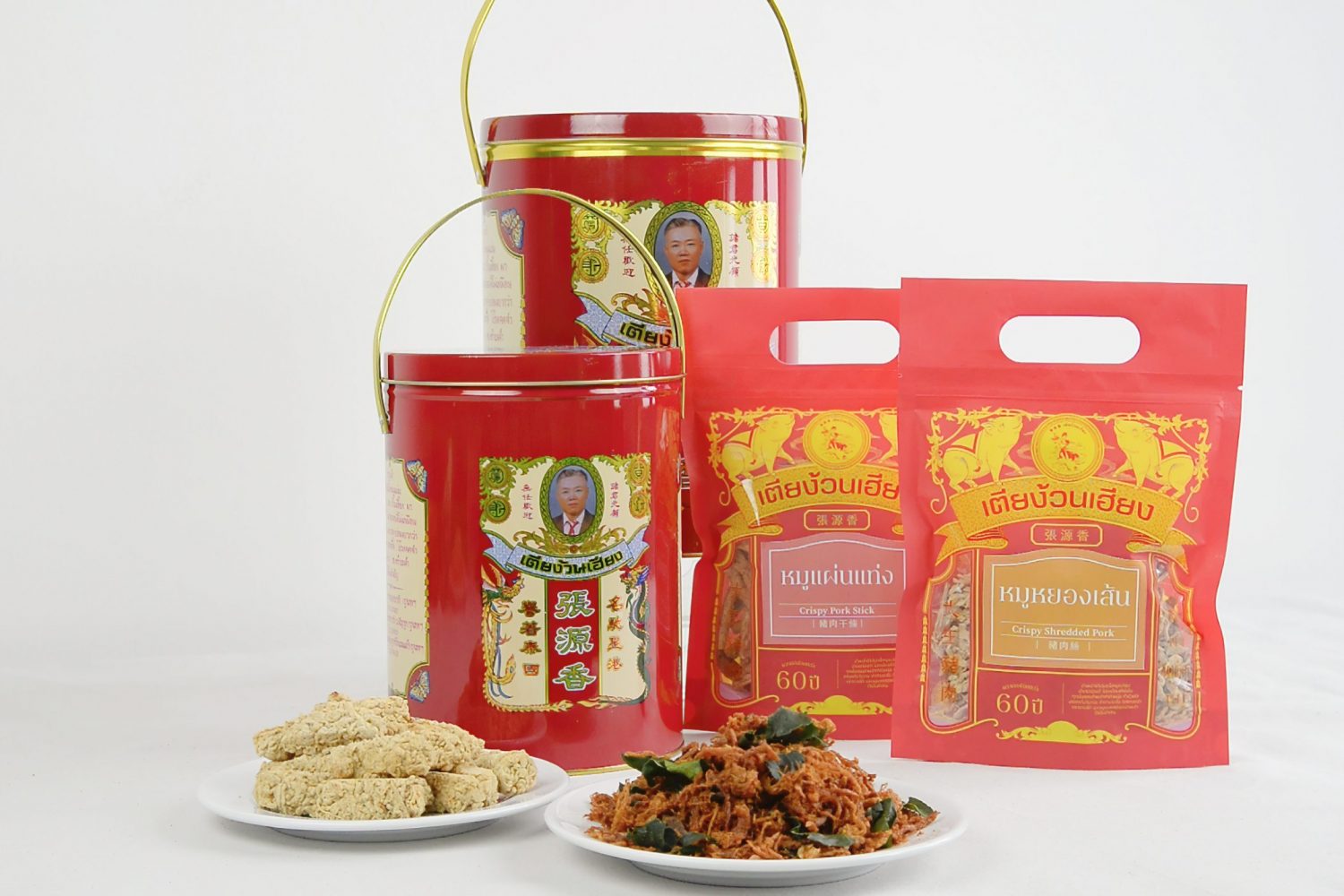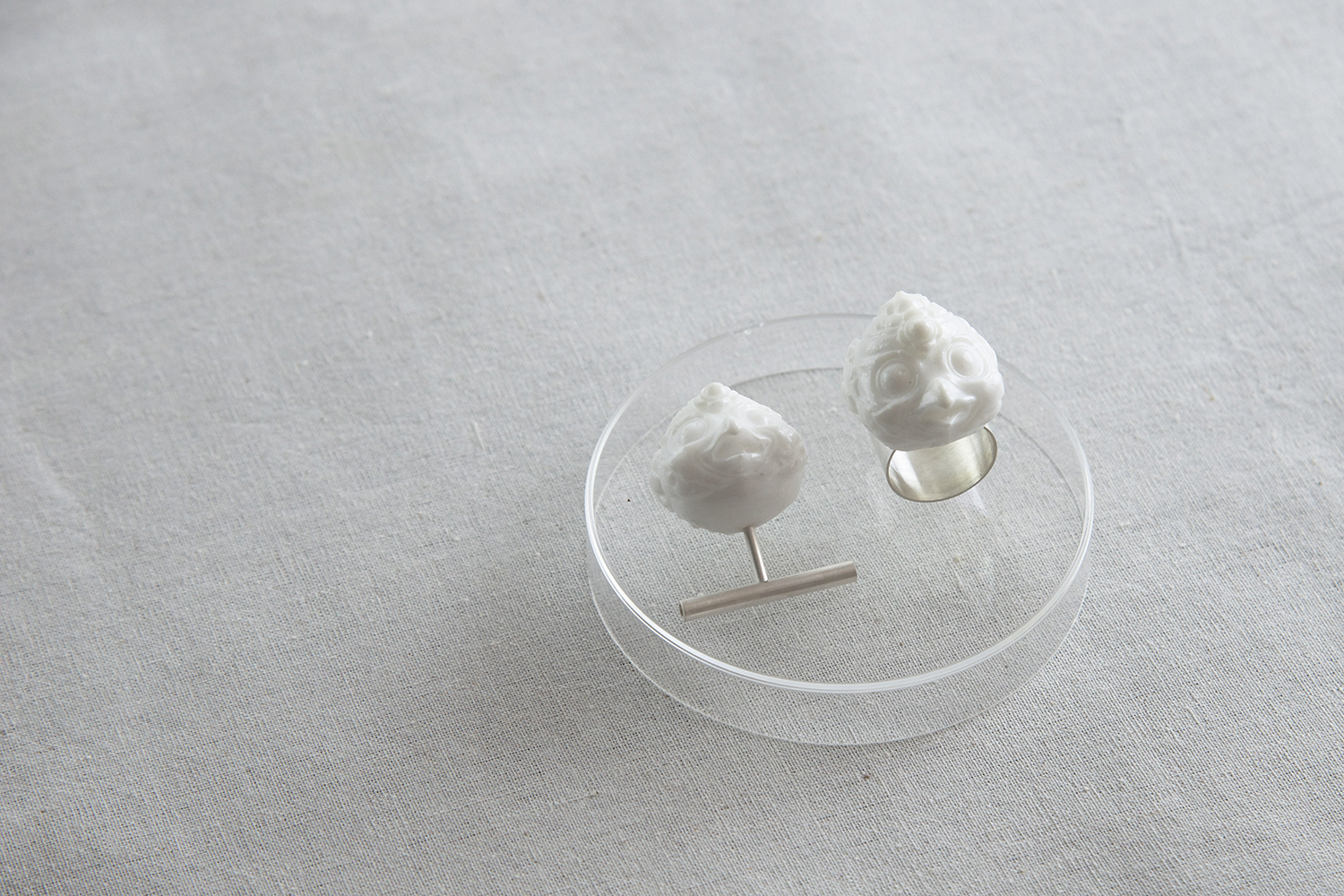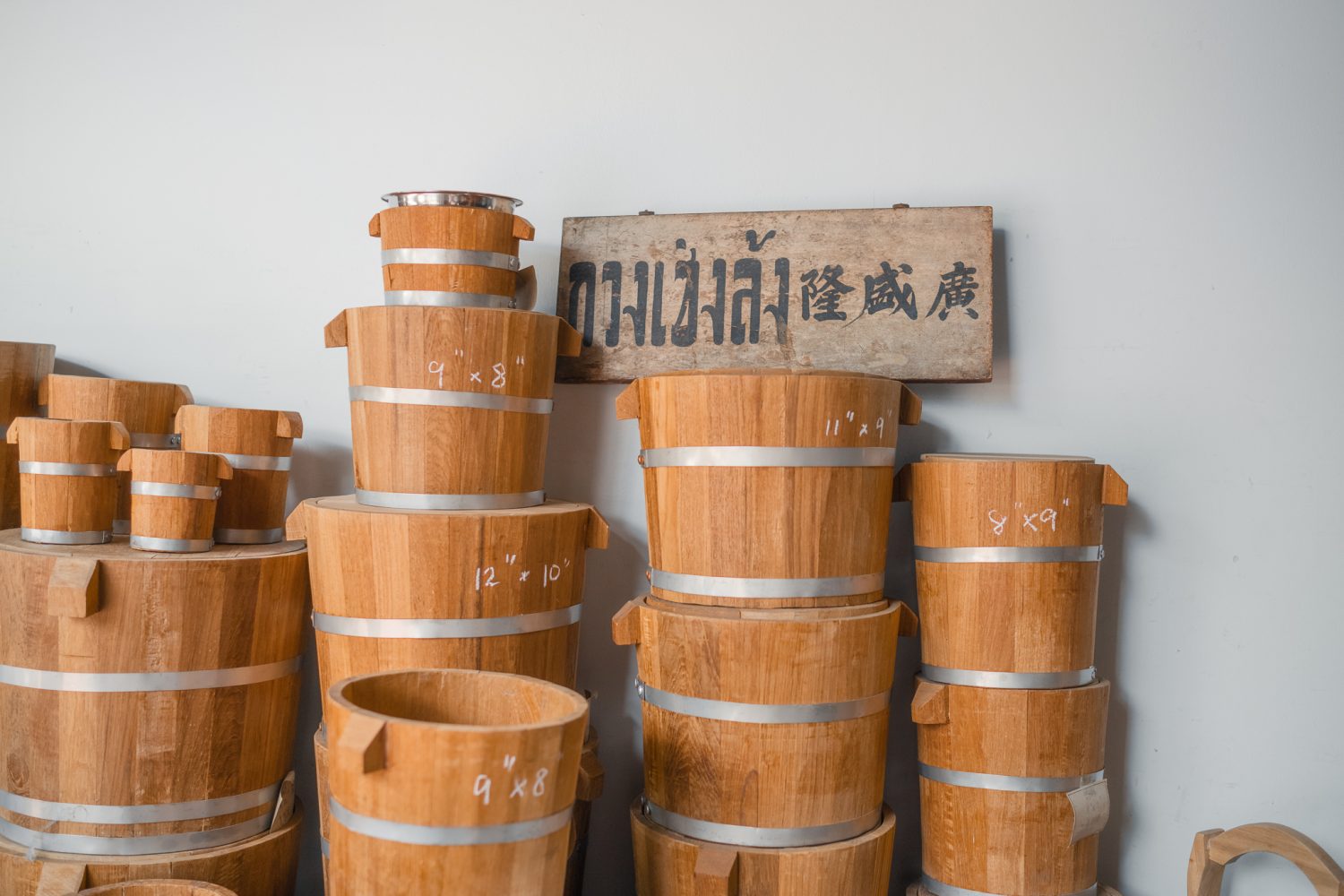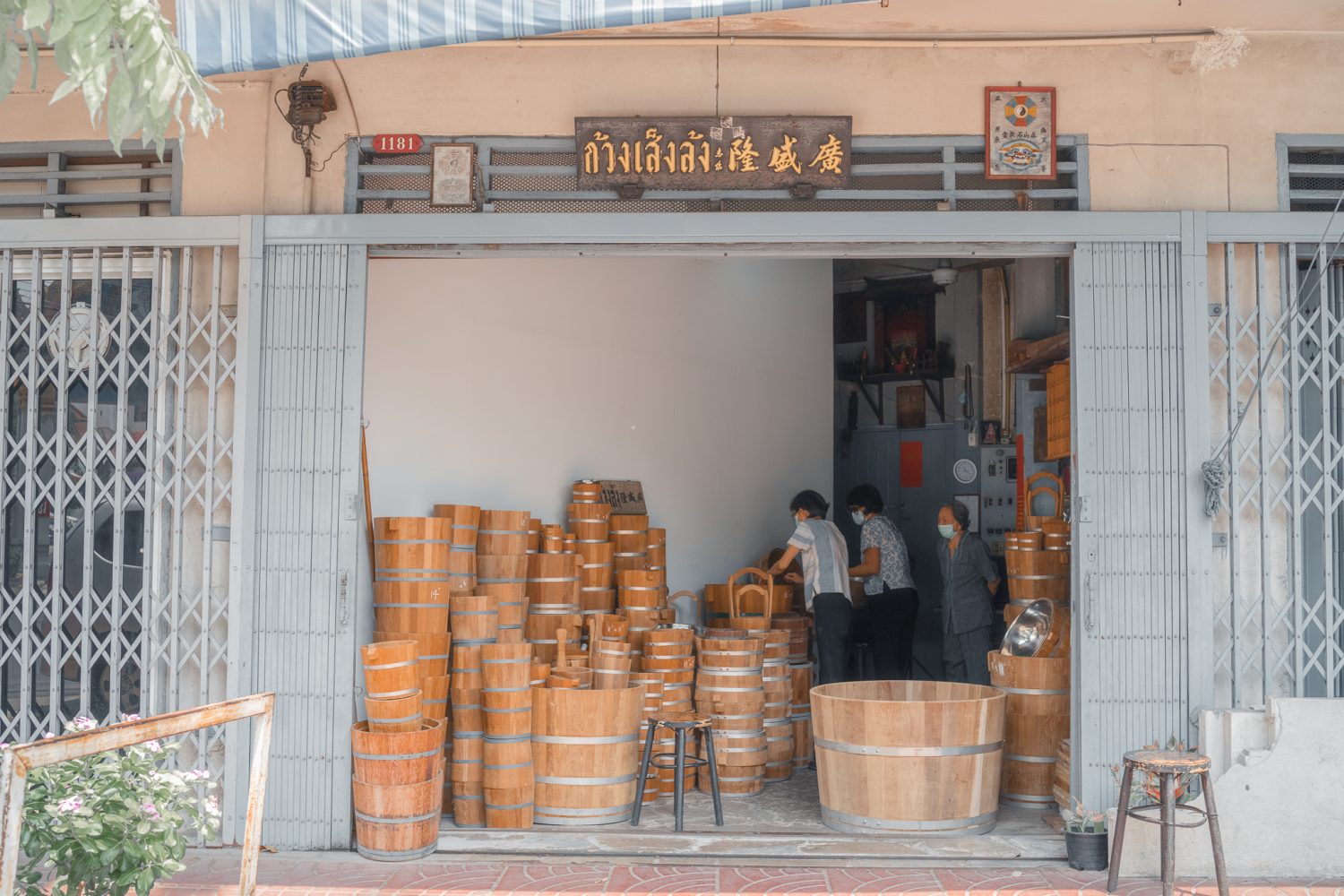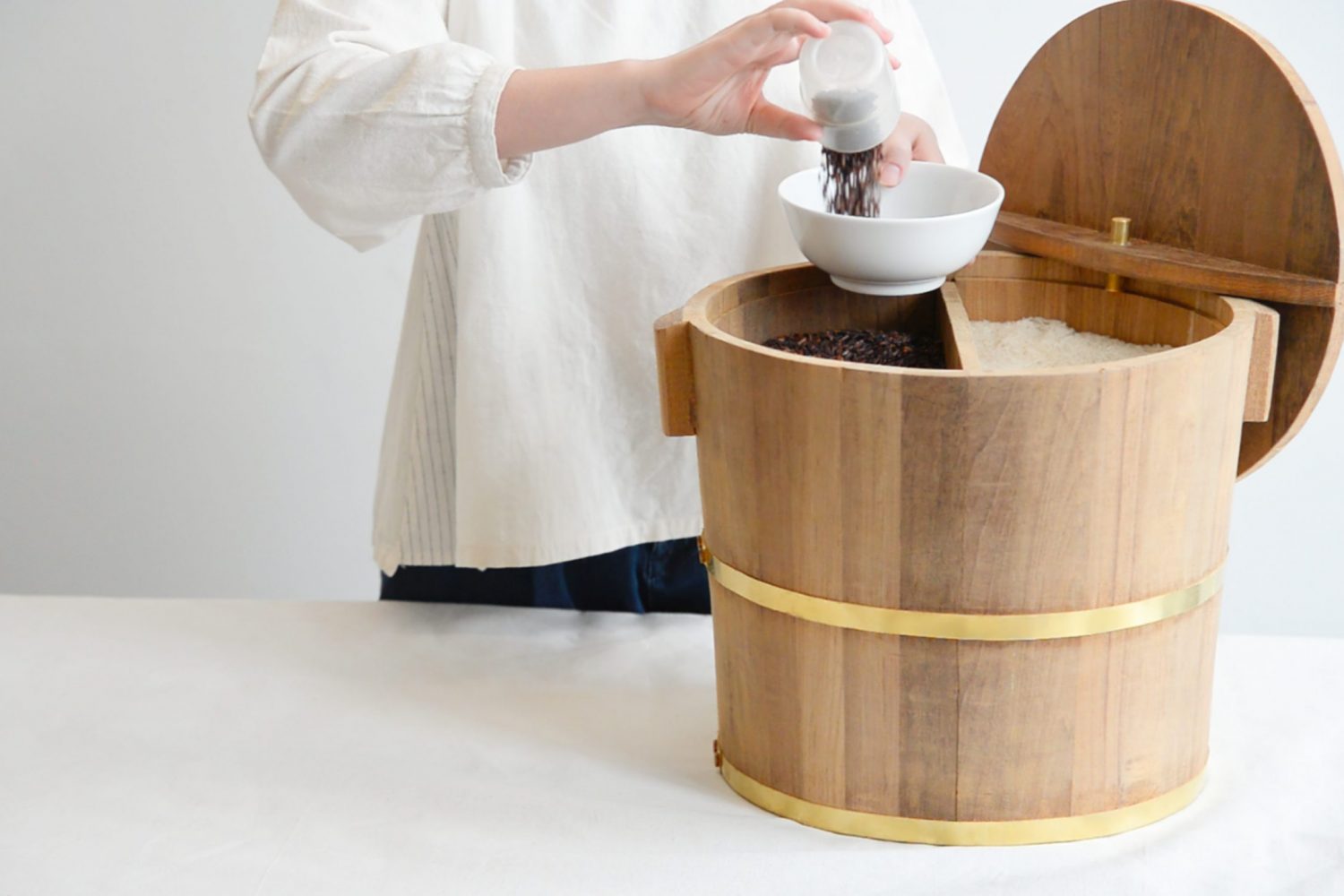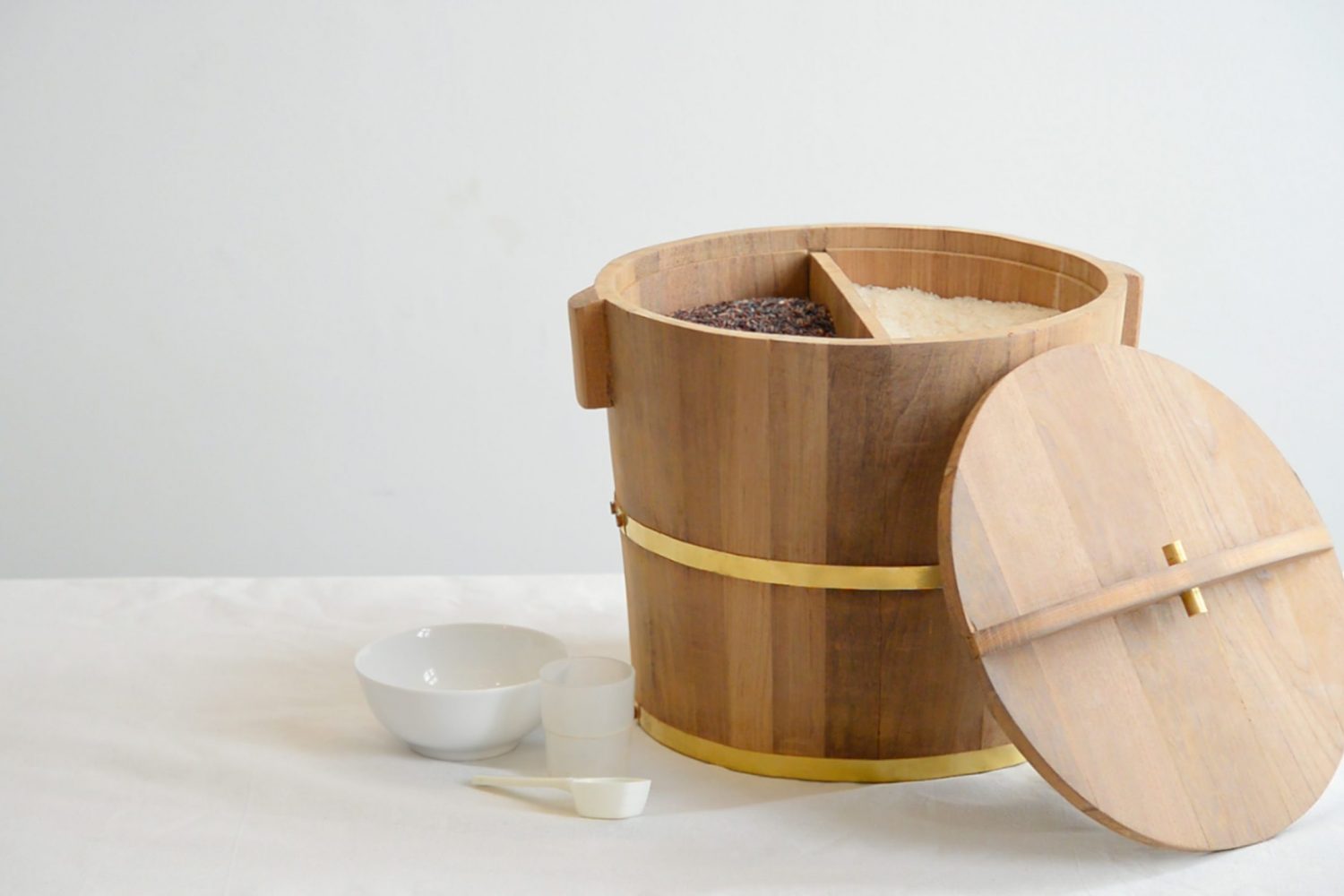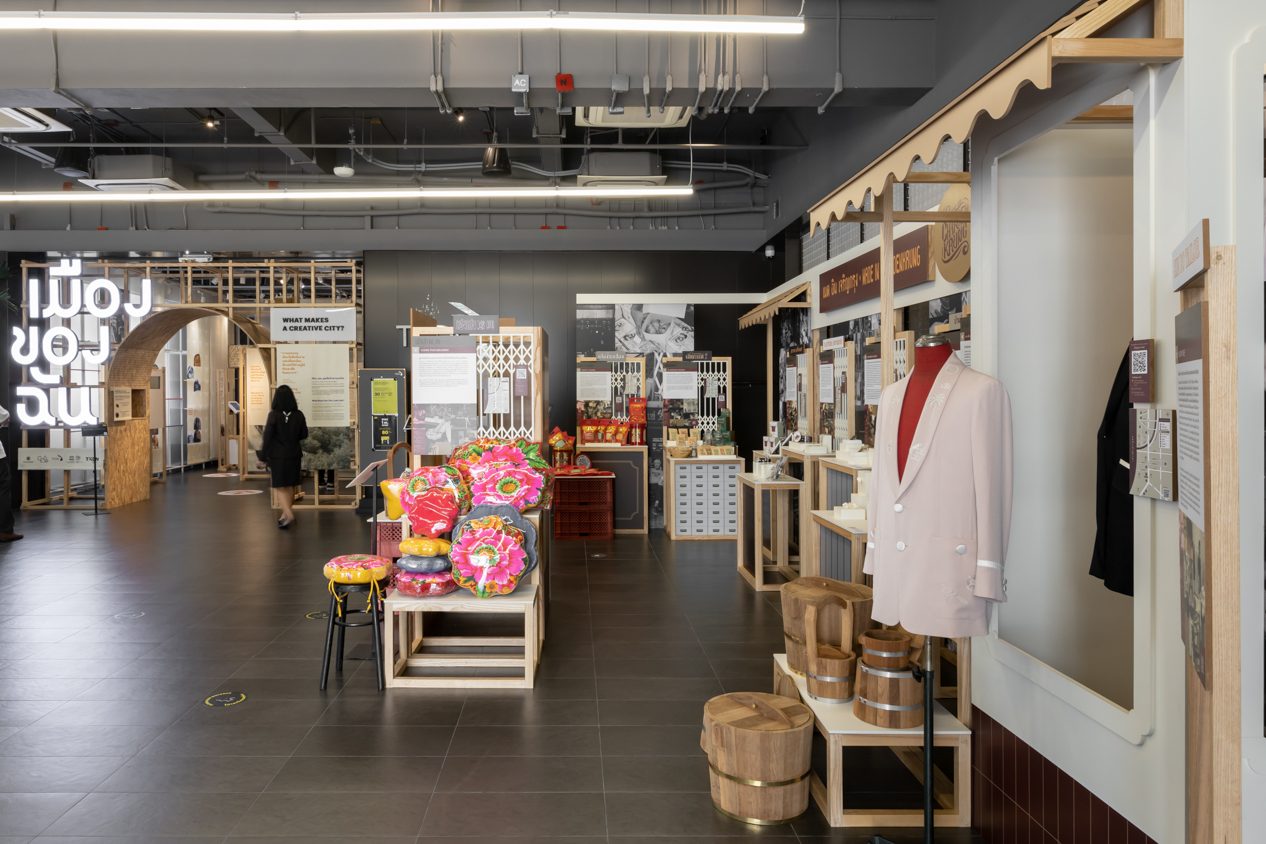CREATIVE ECONOMY AGENCY (CEA) INITIATED THE PROJECT WHICH RECRUITS DESIGNERS FROM VARIOUS FIELDS TO COLLABORATE WITH LAST GENERATION LOCAL BUSINESS OWNERS DURING BANGKOK DESIGN WEEK 2021 AND DEVELOP THEIR BUSINESSES AND SERVICES TO BE MORE APPEALING TO THE CURRENT CONSUMER INTERESTS
TEXT: PITI AMRARANGA
PHOTO COURTESY OF MADE IN CHAROENKRUNG 2 EXCEPT AS NOTED
(For Thai, press here)
This has been a disastrous year for event organization no matter what industry you’re in. The people working on Bangkok Design Week 2021 are unanimous in their views that this year has involved the worst struggles they have ever experienced, from postponed opening dates, changes of offline programs into online activities, to managing the crowd to follow the COVID-19 prevention measures. Not to mention the frustrations expressed from the locals of Charoenkrung neighborhood about the activities and behaviours of some of the viewers in the area where these activities were held. All the obstacles have combined to create a new kind of crisis for everyone involved to learn from all the while, people are attempting to also take responsibility for the situation.
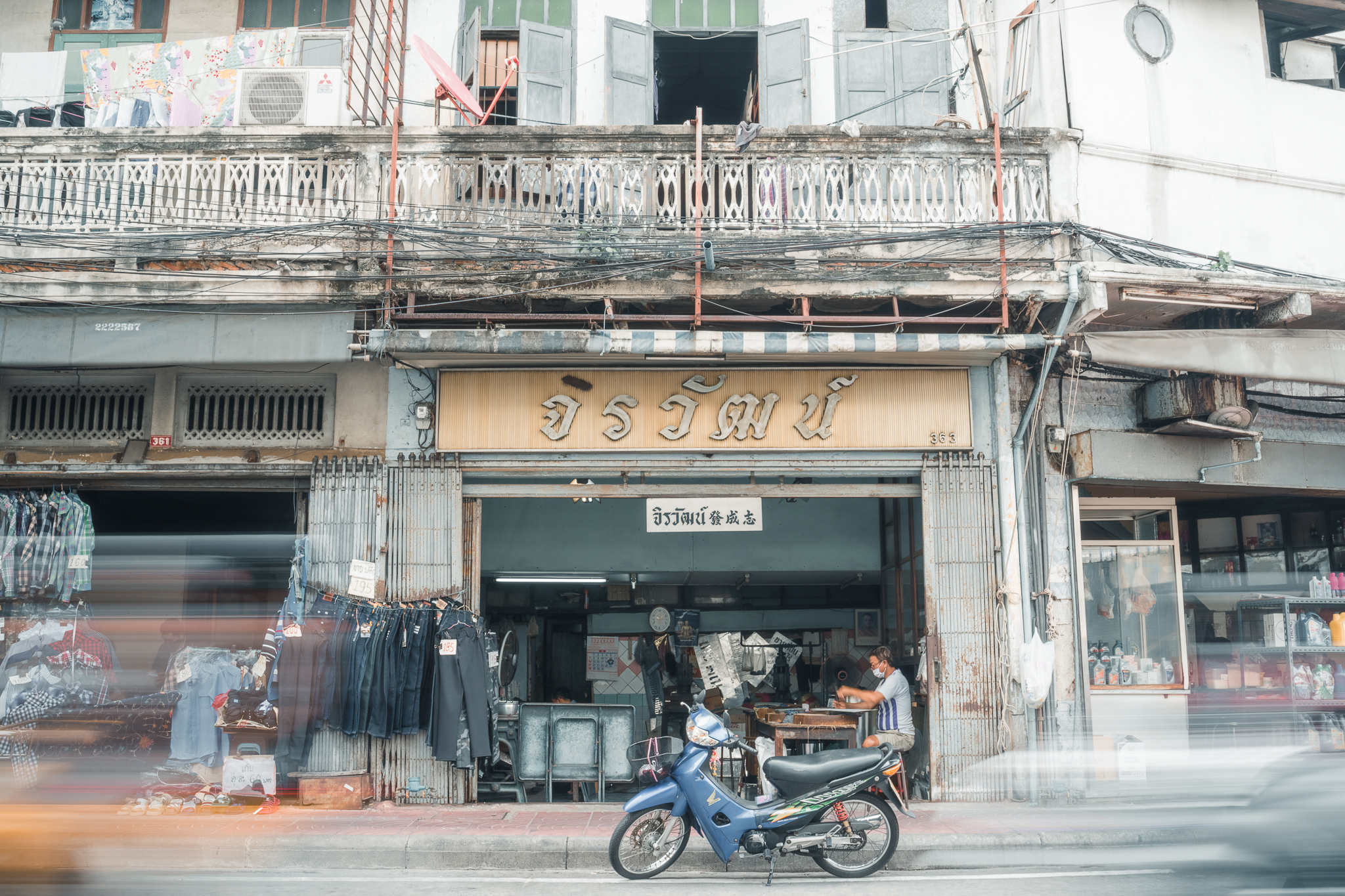
In the midst of criticism being made over how the activities aim to please outsiders without engaging with the locals, there’s Made in Charoenkrung, a project with a proactive approach to the neighbourhood’s development. It is initiated and carried out by Creative Economy Agency (CEA), the public organization whose role is to provide services and consulting to small to medium-sized business in Charoenkrung. The project continues to its second year with a goal to search for and introduce good local products and establishments to the market, as well as assisting them in the development of their businesses and services to be more appealing to current consumer interests. The project hopes to broaden the horizon for new business opportunities to emerge, be there the increase of sales and employment rate as well as the diversification of new commercial methods and platforms. The project pairs up designers with selected local establishments in the Charoenkrung area, and while the exhibition represents the final outcome, the works in the project are intended to be actual products which can be sold.
The list of eight pairings includes Kwang Seng Lhong x o-d-a, the collaboration where o-d-a works with the long standing business known for its rice barrels made of teak wood for a redesigned product that better fits the lifestyle and tastes of modern-day consumers. Huatou Yanwoyun Herbal Drink x NOSH NOSH x Chef Oat have co-developed a bitter milk tea recipe that is both delectable and caters to the contemporary taste. Eastern Antiques x Ek Thongprasert delivers a stylish design out of ancient ceramic utensils. Ban Rak Krut x Atelier Rudee rethinks the Garuda symbol into a more accessible piece of jewellery. SIN DO TAILOR x VL BY VEE reinvents a new fashion formula for the neighbourhood’s first tailor shop. Gold Spices x PARADAi adds sophisticated scents of spices into chocolate bars. Tia Nguan Hiang x Sauce Studio comes up with a new packaging design for dried pork products, making it a gift that pleases both the givers and receivers. Last but not least is Jirawat x Lohameka Studio whose know-hows in metal carving conceives a unique-looking accessory.

This seemingly small project isn’t so small after all, considering how it takes up a whole paragraph to cover all the project descriptions. The criteria CEA uses in selecting the shops for the project are based on four different principles. Firstly, each establishment needs to have the inherent Charoenkrung identity, with know-how and products that are highly specific and one of a kind. More importantly, the businesses have to be under a succession crisis where the current owners are the last generation of successors. What’s equally important is that the business owners need to have an open mind and be willing to work with the design teams as well as to be a part of the project until the end. Meanwhile, the design teams are selected for the common interests or characteristics they share with the chosen local establishments.
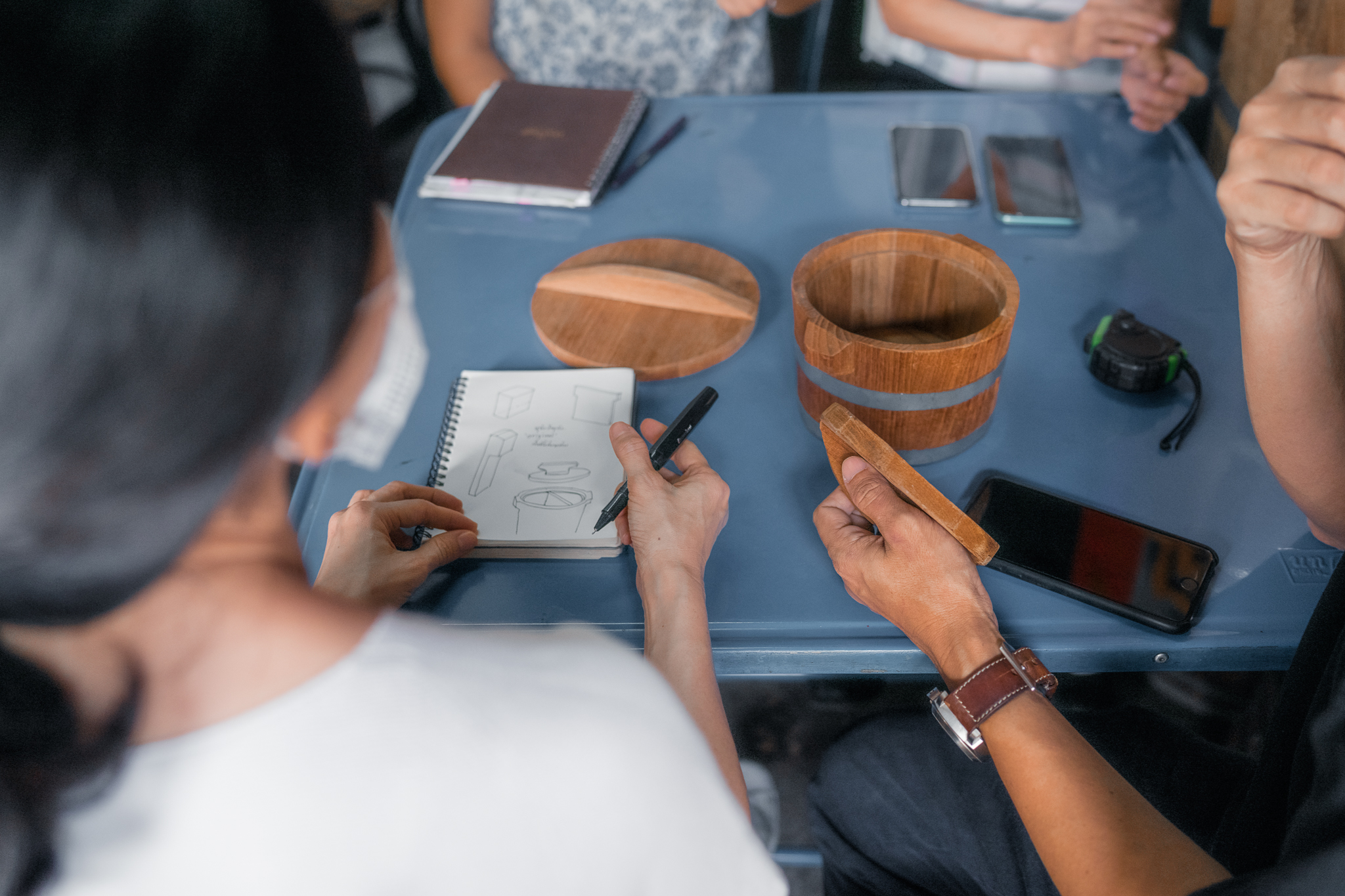
This article will include some extra details of the Kwang Seng Lhong x o-d-a collaboration, since I was personally a part of the design process. The intention is to provide a big picture of how the collaborative process between the design teams and local shops works. The Made in Charoenkrung team contacted us to speak with Kwang Seng Lhong and get to know their products, business and clientele. We asked them about their production process and the limitations they were dealing with. We did our homework about what we wanted to do, and we were particularly interested in how people in the past used teak wood barrels before plastic became widely popular. Charoenkrung was home to many shops selling all different kinds of wooden barrels. It was definitely the place people would go to if they wanted to buy this type of product. Nowadays, almost all of those shops have gone out of business and Kwang Seng Lhong is only one of the two stores in the neighbourhood that still sells teak wood barrels.
The appeal of this kind of wooden container is how it’s functionally driven and manufactured using a highly efficient production process. Most importantly, it lasts a lifetime, which is worth every THB 1,000-2,000 spent. It’s a shame that the popularity of wooden rice barrels is dwindling due to people’s changing lifestyles. We became interested in developing the product to be more relevant to new generation users while preserving its unique spirit and characteristics. New details had been added to make the product more contemporary. The original wooden barrel is divided to have two compartments, allowing the container to store two different types of rice, for example white and brown rice. The design is derived from the modern-day consumers who are more conscious about their health and tend to eat more than one type of rice. The lid is designed to be hung on the barrel’s edge for users to take out the rice more conveniently while metal straps used to fasten a barrel are replaced with brass straps. The entire process took a highly collaborative approach and the design team always conferred with the shop about the possible manufacturing methods as well as their availability so that the project wouldn’t obstruct their regular operations. Commercially, we hope the new design will be a nice addition to the shop’s existing product line and all the while attracting new interested customers.
Made in Charoenkrung is CEA’s pilot project and it seems to be heading towards the right direction. A plan is being prepared for similar projects to take place in other areas such as Chiang Mai, Khon Kaen, and Songkhla, following the provinces that are located in TCDC’s regional operating grounds. The emphasis will be put on the continuation of qualitative development instead of quantitative. We do believe that the endeavour will soon come to fruition and that it could change entrepreneurs viewpoints. Especially for those who had nothing but bad memories and criticism when it came to working with irresponsible governmental agencies in the past.
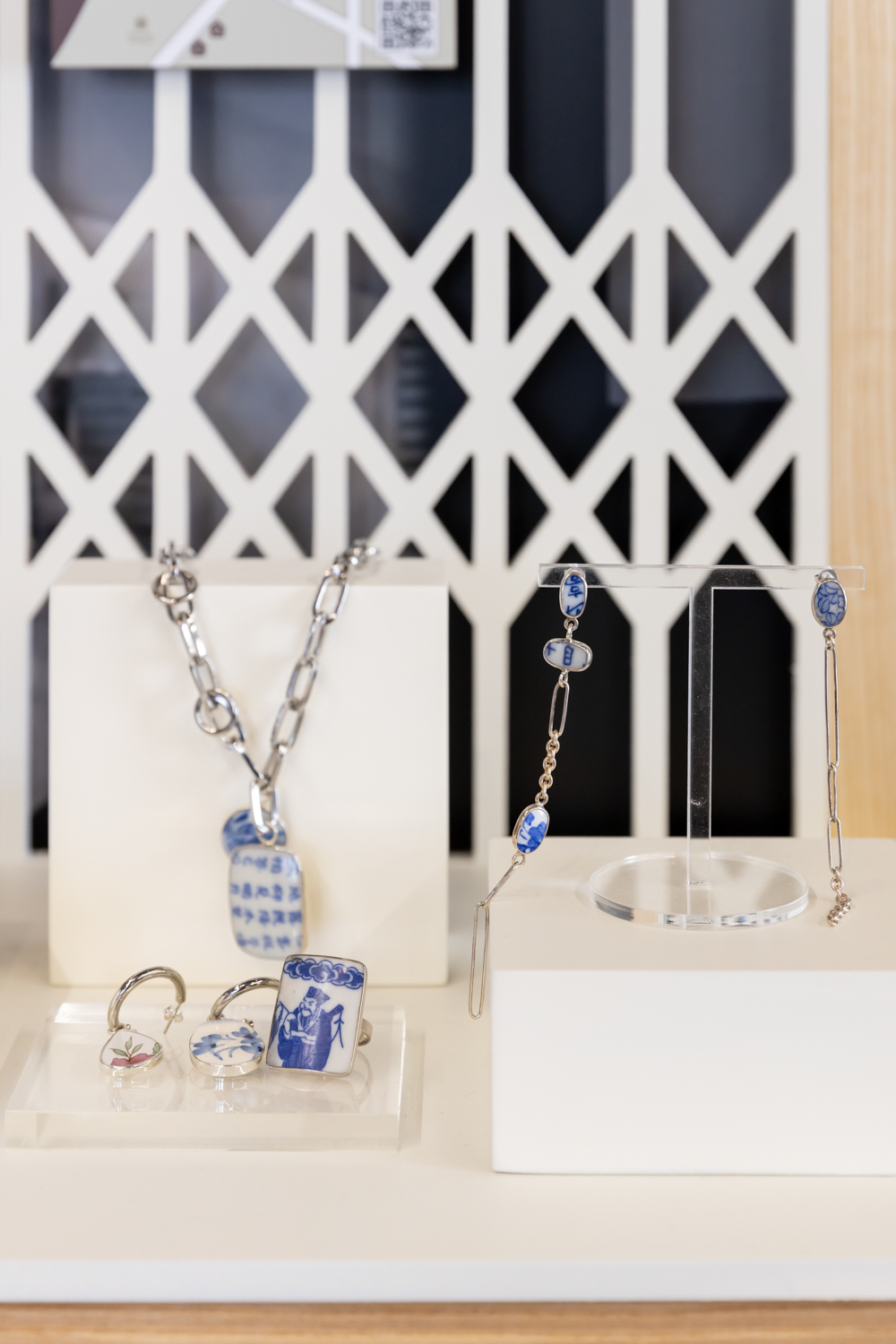
Eastern Antiques x Ek Thongprasert | Photo: Ketsiree Wongwan
When coming across a crisis, humans struggle to find ways to survive, but its important to be using our greatest weapon—ideas. The stories of humans’ confrontation with hardships are often full of details about the relationship and connection between crises and creativity. The goal at the moment may not be about creating the best possible design, but a practical design that’s suitable and resonates with whatever current situations we are facing. We hope this message reaches the people in power leading this country. We expect you to try harder to be creative enough to work and mend your mistakes. Our greatest wish is for the fellow Thai people. Please stay safe and let’s get through this tough time together.
Read more about the concepts behind the developments of the eight projects at Charoenkrung Creative District’s Facebook page.

